Masai Mara Game Reserve
Masai Mara Game Reserve
Our first destination was Masai Mara Game Reserve. This reserve is
connected to the Serengeti National Park in Tanzania across the
border. In Kenya, the terrain is slightly different, resulting in the
name "mara" which means bushy. As you can see from the shots below,
the description is accurate.
October 13, 1996
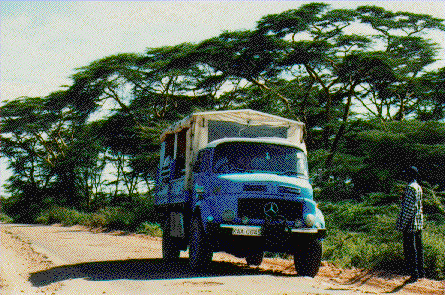
This shot was taken while we were taking a reststop before reaching
Masai (or Massai or Masaii) Mara Game Reserve. This was our first
truck, which we traded for a larger one once we reached Lake Naivasha.
Daniel, our guide, is seen at the right.
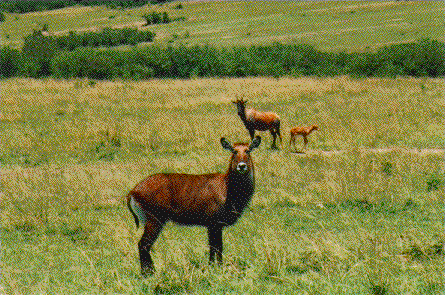
Just inside the gates of the reserve, we started seeing animals
everywhere. A Waterbuck is in the foreground, while a Topi and her
calf are seen in the background.

The
scenery of the game reserve is the background for a group of grazing
Impala. Again, there are Topi grazing in the background, as well as
zebra. The Topi are obvious by their grey thighs which make them
appear to be wearing riding chafs.
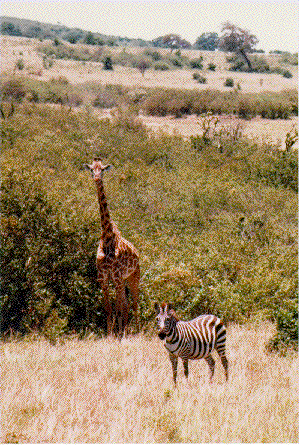
Here we have a Burchell's Zebra (fewer, thicker stripes than Greby's),
which was the only kind we saw. With it is a Masai or Rothschild
Giraffe -- I still haven't made up my mind as to which kind it is.
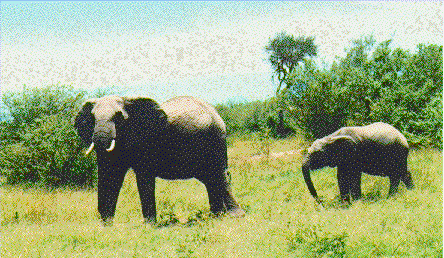
Still
just barely inside the gates to the parks, we encountered a group of
elephants crossing the dirt road. They passed withing 30 ft or so of
the truck.
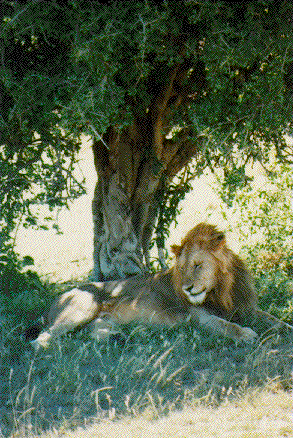
Simba! Yes, the first big cat we encountered was indeed a lion. He
was escaping the afternoon heat by sleeping in the shade of this tree
(don't know the varity). This picture was taken from 20-25 feet
away.
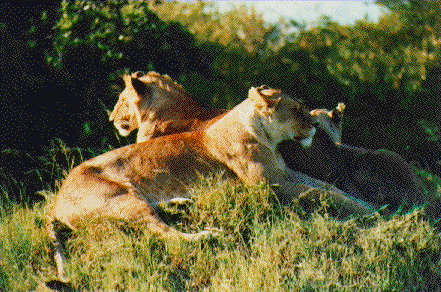
Not 15 minutes later, we found a group of young simba sunbathing on a
small grassy knoll. I actually think that at least one of these lions
is a male (facing left) since it had the beginnings of a mane. We got
within 10-15 feet of these awesome cats!
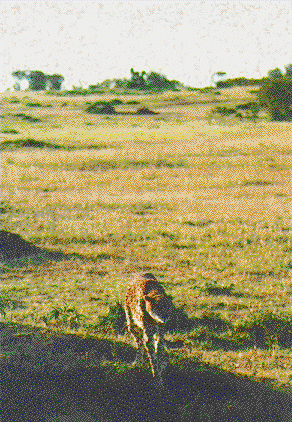
As we were wrapping up our first game drive, we (along with more than
half a dozen other safari vehicles) found this cheetah. One can
practically pinpoint the cheetah locations by the clustering of the
trucks. Apparently, a lot of cheetahs are starving because they
cannot hunt properly due to their being dogged by safaris. Anyway,
this one is walking in the shadow of our truck. Shortly afterward, we
watched as it hunted and killed a baby Thompson's gazelle. It was
stunning to see.
That night, we were treated to a Masai dance, which involves chanting
and a lot of jumping. It is performed by young males who demonstrate
their prowess, presumably to attract wives. Apparently, the real key
to attracting wives is to possess a lot of cows, which is their
measure of wealth. This will allow one to attract wives, which might
bring one more cows as well. Apparently, the Masai are known as a
war-like tribe since they raid other tribes in order to obtain their
cows, which they believe god created for them. Thus, they are simply
re-acquiring their own property.
We spent one night camped just outside Masai Mara. The next day we
went on another game drive in search of neat animals, although we had
certainly seen our fair share the previous day.
October 14, 1996
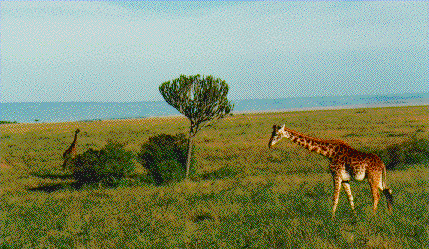
Masai giraffe grazing just after sunrise. The prominent tree in this
shot is called a Euphobia tree. The stalks at the top are all like
indiviual cacti and many of these trees are in bloom at this time of
the year.
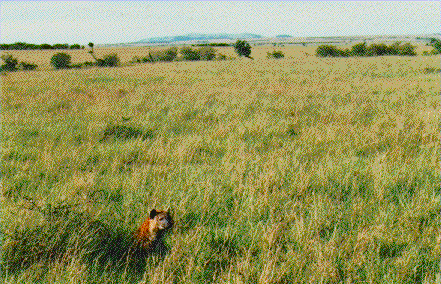
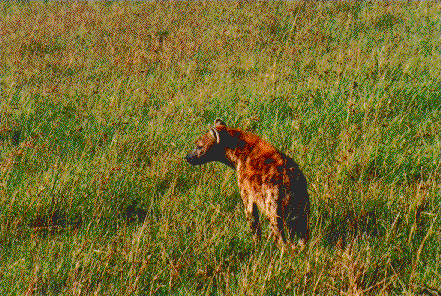
We roused this hyena from its resting place. There were no others to
be seen, but these creatures are not solitary by nature, so this one
may have been a male. Hyena hierarchy is completely dominated by
females; even the lowest ranked female is higher than the highest
ranked male. We did encounter a larger group of these strange looking
creatures later.
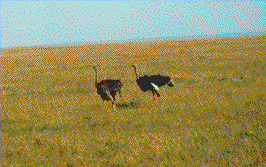
This pic shows a male and female ostrich as they ran together over the
plain. The male is the more brightly coloured; the females are a
mottled brown. We actually did not get very close to these animals as
they are not friendly and do not like to be approached.
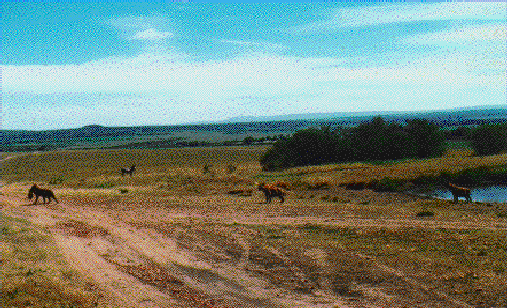
Just before we left Masai Mara, we came upon a group of hyena who had
recently made a kill or stolen one. Here, the hyena on the left walks
off with what appeared to be a zebra leg. Yum, yum.
The next day, as we packed up our tents, we had to contend with Masai
women who had come to hawk their wares to us. These included
bracelets and necklaces, all beadwork. In Kenya, these people are
exceptionally pushy and would actually put bracelets right on your
wrists and you then find yourself negotiating over something you
didn't even want in the first place. The polite way to get them to
back off a bit is to tell them ka-sho, which means tomorrow and is a
means of letting them know that you are not interested.
Return to Table of Contents
Forward to "Masai Village"












